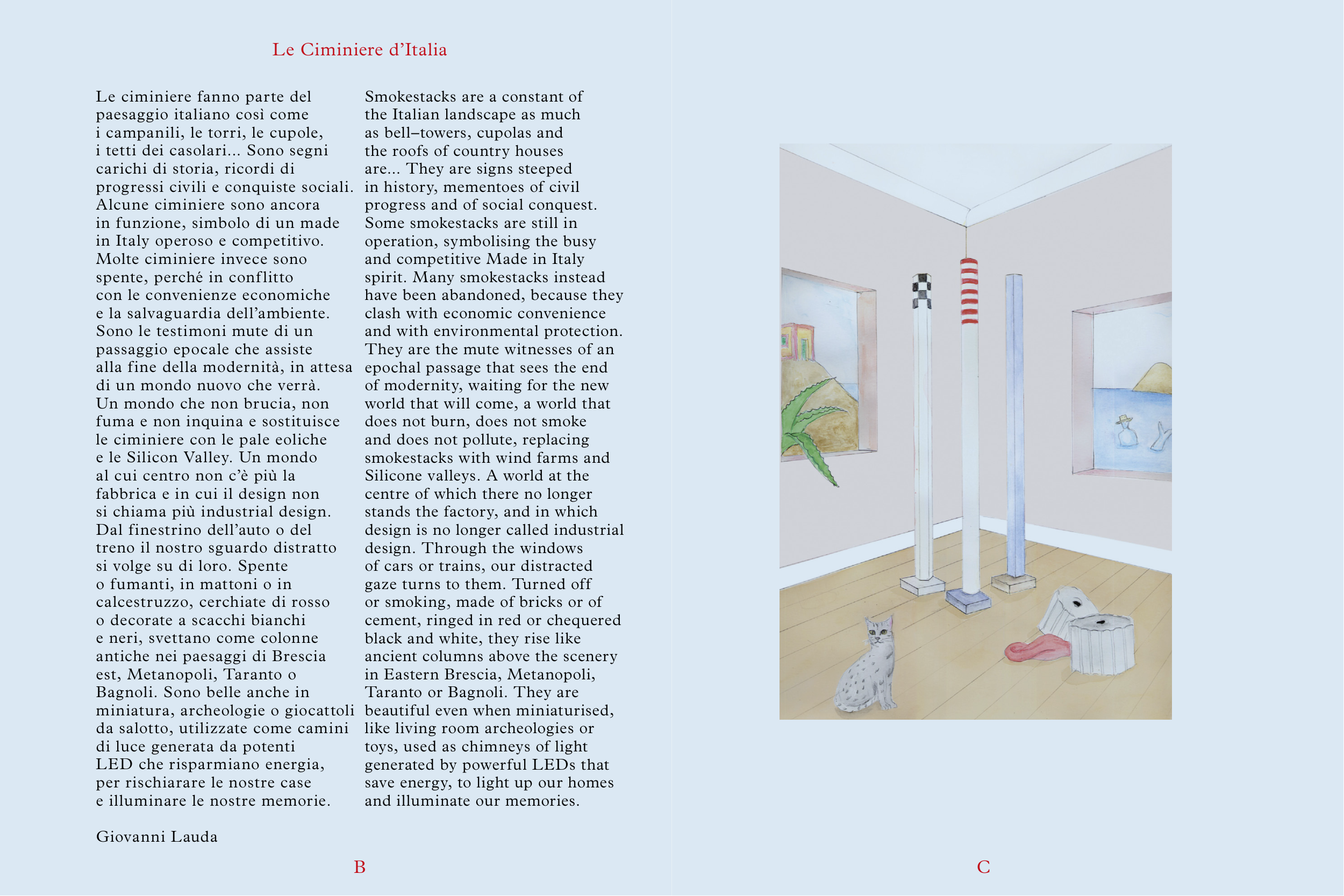Le Ciminiere d’Italia
C
Le ciminiere fanno parte del
paesaggio italiano così come
i campanili, le torri, le cupole,
i tetti dei casolari... Sono segni
carichi di storia, ricordi di
progressi civili e conquiste sociali.
Alcune ciminiere sono ancora
in funzione, simbolo di un made
in Italy operoso e competitivo.
Molte ciminiere invece sono
spente, perché in conflitto
con le convenienze economiche
e la salvaguardia dell’ambiente.
Sono le testimoni mute di un
passaggio epocale che assiste
alla fine della modernità, in attesa
di un mondo nuovo che verrà.
Un mondo che non brucia, non
fuma e non inquina e sostituisce
le ciminiere con le pale eoliche
e le Silicon Valley. Un mondo
al cui centro non c’è più la
fabbrica e in cui il design non
si chiama più industrial design.
Dal finestrino dell’auto o del
treno il nostro sguardo distratto
si volge su di loro. Spente
o fumanti, in mattoni o in
calcestruzzo, cerchiate di rosso
o decorate a scacchi bianchi
e neri, svettano come colonne
antiche nei paesaggi di Brescia
est, Metanopoli, Taranto o
Bagnoli. Sono belle anche in
miniatura, archeologie o giocattoli
da salotto, utilizzate come camini
di luce generata da potenti
LED che risparmiano energia,
per rischiarare le nostre case
e illuminare le nostre memorie.
Giovanni Lauda
Smokestacks are a constant of
the Italian landscape as much
as bell–towers, cupolas and
the roofs of country houses
are... They are signs steeped
in history, mementoes of civil
progress and of social conquest.
Some smokestacks are still in
operation, symbolising the busy
and competitive Made in Italy
spirit. Many smokestacks instead
have been abandoned, because they
clash with economic convenience
and with environmental protection.
They are the mute witnesses of an
epochal passage that sees the end
of modernity, waiting for the new
world that will come, a world that
does not burn, does not smoke
and does not pollute, replacing
smokestacks with wind farms and
Silicone valleys. A world at the
centre of which there no longer
stands the factory, and in which
design is no longer called industrial
design. Through the windows
of cars or trains, our distracted
gaze turns to them. Turned off
or smoking, made of bricks or of
cement, ringed in red or chequered
black and white, they rise like
ancient columns above the scenery
in Eastern Brescia, Metanopoli,
Taranto or Bagnoli. They are
beautiful even when miniaturised,
like living room archeologies or
toys, used as chimneys of light
generated by powerful LEDs that
save energy, to light up our homes
and illuminate our memories.
B


